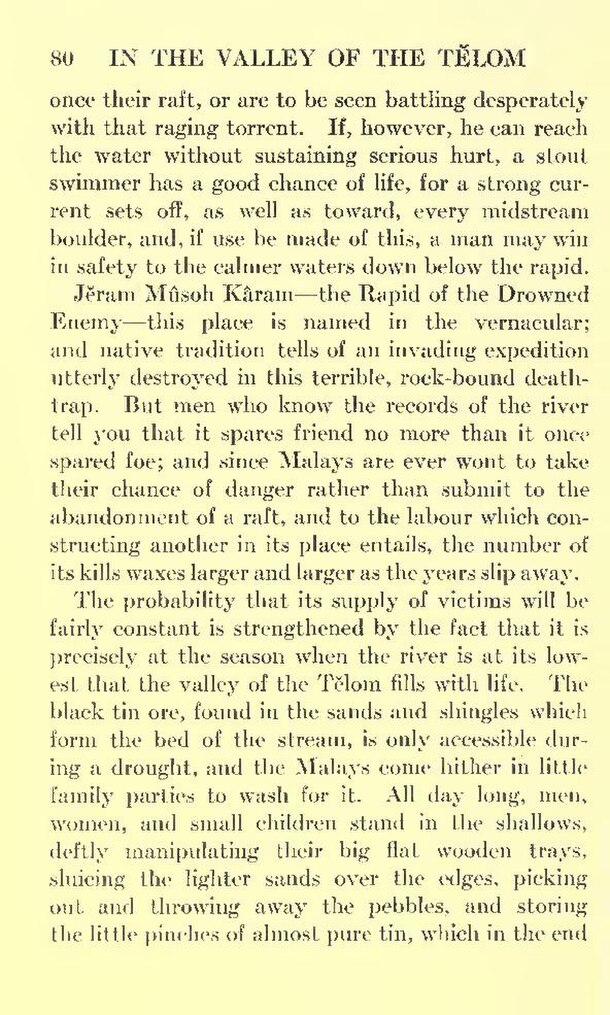once their raft, or are to be seen battling desperately with that raging torrent. If, however, he can reach the water without sustaining serious hurt, a stout swimmer has a good chance of life, for a strong current sets off, as well as toward, every midstream boulder, and, if use be made of this, a man may win in safety to the calmer waters down below the rapid.
Jĕram Mûsoh Kâram—the Rapid of the Drowned Enemy—this place is named in the vernacular; and native tradition tells of an invading expedition utterly destroyed in this terrible, rock-bound death-trap. But men who know the records of the river tell you that it spares friend no more than it once spared foe; and since Malays are ever wont to take their chance of danger rather than submit to the abandonment of a raft, and to the labour which constructing another in its place entails, the number of its kills waxes larger and larger as the years slip away.
The probability that its supply of victims will be fairly constant is strengthened by the fact that it is precisely at the season when the river is at its lowest that the valley of the Tělom fills with life. The black tin ore, found in the sands and shingles which form the bed of the stream, is only accessible during a drought, and the Malays come hither in little family parties to wash for it. All day long, men, women, and small children stand in the shallows. deftly manipulating their big flat wooden trays, sluicing the lighter sands over the edges, picking out and throwing away the pebbles, and storing the little pinches of almost pure tin, which in the end
